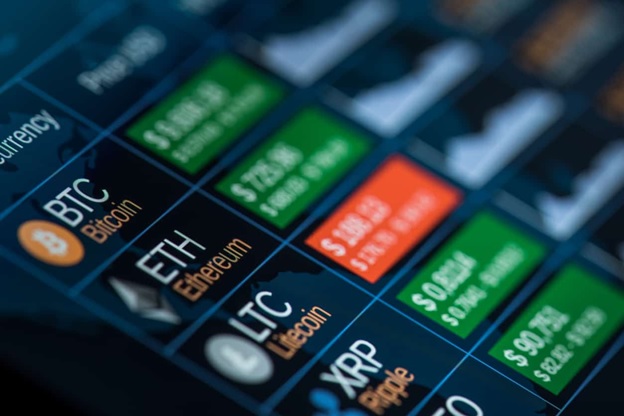Recent years have witnessed the increased popularity of cryptocurrencies as a new form of trading. Bitcoin, and Ethereum are among the widely used digital currencies. The space is also rapidly growing with new features such as Trading Derivatives that are transforming investors’ experience.
Today with the technological innovations and incredible growth of mobile users there is no doubt that more and more people will be into trading. It is indeed almost possible for many traders to do whatever they want with their mobile devices in the modern era. Due to this digital innovations trading tools and instruments are one click away just like the derivatives in trading.
But it is crucial to understand precisely what these derivatives are and how the derivatives systems can be used. For Indian traders it is important for them to know the derivative meaning in Hindi for them to fully understand what it is for and how it can help them in their trading. But the question is what are derivatives?
Derivatives are defined as capital-efficient trade instruments that derive their value from major cryptocurrencies such as Ethereum and Bitcoin. They are meant to help traders reduce the risk associated with cryptocurrencies’ unpredictability. They aim to lower an investor’s risk exposure while also assisting them in protecting their investment portfolio from potential losses and that’s the reason why many of the crypto companies wanted to push through a regulated derivative sector..
They have become essential instruments for crypto traders who want to speculate on cryptocurrency prices while managing the associated risks. Traders can gain a competitive advantage in risk mitigation while increasing their revenue by using derivatives. As a result, crypto derivatives have sparked a lot of attention in recent years for various reasons. Drawing on statistics from 42 markets, the cryptocurrency derivatives market’s trading cap for the 3rd quarter of 2020 was $2.7 trillion.
This represents a 25.1% increase from the previous quarter, illustrating the massive growth in crypto-derivatives in recent years.
How Trading Derivatives Work
Trading a derivative is simple and involves executing a short or long bet based on where the trader believes the value of the cryptocurrency might be next. If the trader makes the correct choice, they will benefit, but they will lose money if they make the wrong choice.
As a trader, you can utilize leverage to boost your profit or loss margins based on your position. This will also allow you to place larger orders more than what your real trading funds can allow, hence the name Margin trading.
Why are Trading Derivatives Important in Trading
Understanding how to trade crypto derivatives effectively can fuel your success. For instance, you will be able to earn profits even when the underlying assets are performing poorly.
Allows for diversification in investment
Using derivatives, investors may diversify their portfolios and gain exposure to various cryptocurrencies. Investors can use derivatives to construct sophisticated techniques like pairing and arbitrage trading.
Safeguards Against Market Volatility
Derivatives can help protect a portfolio against price volatility and unforeseeable hazards. Derivatives aspects such as options enable you as the trader to’ short’ an asset or gamble on its price falling. On the other hand, you cannot safeguard your investment portfolio as a long-term investor.
Enhances Price Discovery
Price discovery is described as identifying the worth of an asset. There are many factors that influence it, spanning from liquidity in the market to knowledge transfer, all of which you need to have a profound understanding of. This can be a task for even experienced traders, but this is much easier with derivatives.
Increases Efficiency and Productivity
Price discovery becomes more successful when investors can trade short and long, resulting in efficient and smoother market movements. Market players recognize that all useful facts have been included in the asset’s current cost with optimum price discovery, boosting price reliability.
Different Types of Trading Derivatives
Options
Options allow you to mitigate investment risk as they can be traded centrally cleared on exchanges presenting the much-needed transparency and liquidity. The intrinsic value and time premium are the two premium factors you can use to determine the value of an option. Also, numerous other option strategies combine buying and selling puts and calls to produce complex combinations that match other objectives.
Index Return Swaps
An equity index return swap is a contract agreement between two parties to swap sets of cash flows at predetermined periods over defined years. These swaps are popular among investors looking for a simple and cost-effective approach to obtain exposure to a specific asset class.
Contract for Difference (CFD)
A contract for difference (CFD) is a commitment between a seller and a buyer in which the seller promises to compensate the buyer with the difference between the current stock price and the price at the time of the contract if indeed, the price increases. If the margin is negative, the buyer must compensate the seller. The goal of a CFD is to allow traders to speculate on price movements without owning the underlying shares.
Warrants
A stock warrant grants the proprietor the right to purchase a stock at a specific price on a specific date. Stock warrants, like call options, can be exercised at a predetermined price. Essentially, the price of a warrant is always greater than the underlying stock when it’s first issued, but it has a long exercise time before it expires.
In conclusion, derivatives are a means to boost your portfolio’s returns, shield yourself from declining prices, and diversify your holdings with commodities. Before investing in or trading derivatives, take the time to understand the techniques and risks.
Read more: Apple Watch SE 44 mm
